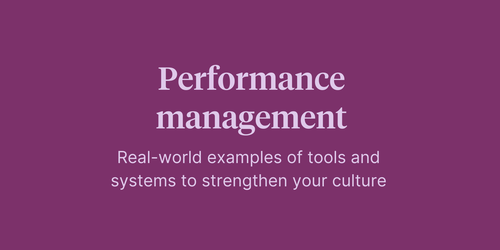
How to launch a corporate social responsibility program

In the digital age, a company’s decisions and their impact on the broader world are on display for all to see. This visibility can be beneficial, as in the case of the Ben & Jerry’s Foundation, which offers small organizations funding for a community-building project of their choice. It can also be a force for change, like when Google employees took to the streets to make their voices heard. Companies that launch corporate social responsibility programs have nothing to hide behind and are held to a high standard.
At Wealthsimple, Mallory Greene leads the corporate social responsibility (CSR) program. Her passion for CSR started while studying international development at university. As one of Wealthsimple's first employees (#6 to be exact), she made it known that leading the CSR program was one of her long-term goals. In this article, she shares how to launch a CSR program using the same outline she pitched to Wealthsimple's program off the ground.
Seven steps to pitching and launching a CSR program
Below is a preview of the seven steps to launching a corporate social responsibility program.
- Define corporate social responsibility
- Understand the benefits to your organization
- Get executive buy-in for the program
- Establish your baseline and your long-term vision
- Explore unique opportunities relevant to your mission
- Create metrics to measure your program's impact
- Stay connected with the CSR community
We will go into each of these seven steps in more detail below.
1. Define corporate social responsibility
When companies practice corporate social responsibility, they are acting in a way that contributes positively to society.
Cultural social responsibility often includes an economic, social, or environmental component wherein companies measure, monitor, and improve their impact on society as a whole. It's a similar philosophy to the quadruple bottom line, which means companies consider their actions based on their impact on people, the planet, profit, and its purpose.
As Mallory says, it's not a one-size-fits-all model.
"What CSR means at Wealthsimple can be very different than what it means to other organizations. You should think about what impact you want your business to have," she explains. However, she sees the future of business as one in which all companies have a strong mission and CSR programs built off that mission.
Mallory continues, "I think there will be a transition of how we've traditionally thought about CSR and what it will become. A lot of businesses have made unethical business decisions and then introduced CSR to conceal it. But you see more leaders speaking out against that, and I believe few will tolerate that going forward. If ethical business and social responsibility aren't at the core of what you do, then you're unlikely to succeed in the future."
2. Understand the benefits to your organization
When you're trying to grow a business, there are many priorities, so some companies might not immediately see the benefits of having a CSR program. For Mallory, her pitch positioned CSR from the angle of how it would benefit the business, clients, employees, and the community.
"You have to cater to different audiences, know the business case, and understand what your leadership team cares about. I proposed using what we already have in place, whether it be our product or our people, and building a program off of that. It shows that we could still be scrappy and build something over time that scale," says Mallory.
- Community impact: Our purpose is to give back to the community and build a better tomorrow. Beyond helping families save and increasing financial literacy rates, our CSR program leads to improved employability, earnings, and financial stability for Canada.
- Employee alignment: Establishing a CSR program helps us attract and retain the best talent globally. Studies show that happy, engaged, and purpose-driven employees are more productive and experience less turnover than competitors. According to a study from the Indian Journal of Science and Technology, an astounding 80% of the new workforce cares deeply about its employer's contribution to, and impact on, society.
- Brand loyalty: There is a higher customer loyalty for socially conscious companies. According to a Horizon Media Study, 81% of millennials expect their favorite companies to declare their corporate citizenship publicly. Additional data from Edelman shows that 68% of global consumers would remain loyal to a brand if the organization practiced social responsibility.
- Bottom line: Globally, 73% of millennial consumers are willing to spend more on a product if it comes from a sustainable brand, and 87% say they'd purchase a product because the company advocated for an issue they cared about. Once public, CSR initiatives can improve your company's stock price by getting listed in indices like FTSE4Good and Dow Jones Sustainability.
3. Get executive buy-in for the program
"Your CEO or someone on your executive leadership team needs to be a champion of the CSR initiative, or it likely won't happen," says Mallory. Generally, she's a team of one, working to move the program ahead with others who pitch in.
"There's a lot to do and not a lot of resources. Our CEO helps me move things along and get the resources I need from the rest of the team. We're both very connected to and passionate about what we're trying to build, which inspires other members of the team to get involved."
Michael Katchen, CEO of Wealthsimple, says, "As a founder, I want to create the future that I hope exists tomorrow. It's about solving big problems, some of the world's greatest economic, social and environmental challenges, by building great companies. We want to empower people to make a positive impact with their everyday consumer choices and support companies that are changing the world. It's a business model where purpose and profit are not mutually exclusive."
Having the CEO and leadership support the CSR program paved the way for Mallory. However, this isn't the case for every company. For those instances, Mallory says, "I think it's still worth building a pitch of why it should matter. Because it's not a priority for the CEO, maybe someone else in leadership can be that champion. There may be a point where it just won't happen at the organization, and then I would say find one that does care about it. Corporate social responsibility is the future of business."
4. Establish the baseline for your corporate social responsibility program
Mallory's biggest piece of advice when it comes to kicking off a CSR program is this:
"You don't need to jump from having a volunteer day to donating millions of dollars per year. Use what you have to build a CSR program that’s sustainable. We often see businesses donate a percentage of their profits to a community organization or allow specific consumers to use their product for free. You should figure out what makes sense for your business."
She started organizing volunteering and charitable giving programs before her formal role as Head of Corporate Social Responsibility. "If you want to see your organization give back, organize a volunteer day, or do some fundraising, just start somewhere and build from there," she says.
However, the one thing Mallory would have done earlier is sit down with the CEO and talk about a strategic plan.
"Initially, if someone allowed us to volunteer, we would do it. If someone on the team were really passionate about a certain cause, we would raise money. But I wish we had a strategic plan and vision from the beginning of what it would eventually become," says Mallory.
5. Explore unique opportunities relevant to your mission
One way to identify opportunities for your company’s CSR program is to start with your company’s mission. Wealthsimple’s mission is to make financial services accessible to everyone, regardless of age, net worth, or circumstance. The mission of their CSR program takes that to a more specific level - helping the 2 million children in Canada who don’t have access to education savings. It’s a problem that Wealthsimple is in a unique position to solve, as the greatest barrier to education isn’t time, ability, or desire – it's finances.
Wealthsimple’s program is in its foundational years, and Mallory plans to start with local opportunities and then go global. "Thinking locally, it's always about impacting the communities where we work and live. We’re partnering with organizations in Toronto because we care deeply about where we’re building the future of financial services. Then we can scale out to Canada and globally. Canada is unique in offering an innovative education incentive program, but the biggest barriers to education are universal. It’s about making school a reality for millions of people who traditionally haven’t had that access," says Mallory.
6. How to measure the success of your program
Measuring the success of a CSR program will differ based on the program you implement. It’s important to note that some benefits will be tangible, such as revenue or growth from gaining access to a new market. Others will be equally important but intangible, such as developing a new capability for a team member or enhancing employee morale. You may experience short-term results, but CSR is largely a long-term strategy.
Mallory included an example in her pitch: their ability to measure employee engagement through Culture Amp surveys. "We can specifically measure employee agreement with the question, 'Wealthsimple's commitment to social responsibility (e.g. community support, sustainability, etc.) is genuine.' It’s a great tool to see how the team is feeling, what impact they want the company to make and track over time," she says.
She continues, "As for the impact of our business and the community, it’s as simple as tracking how many partners we work with, the families we introduce to our program, and specifically the children who are impacted by the work we’re doing. Depending on the program, you’ll be able to establish metrics similar to how every other department in your organization does."
7. Stay connected with the CSR community
When Mallory realized working in CSR was her passion, she reached out to others in the space. “I try to speak with as many people as I can, and take their advice and insights, and then make that relevant to Wealthsimple. Whether that be people working at large corporations, small charities, government officials, or those working directly in technology, there’s so much to learn from them. Building strong relationships is key to being successful in this role.”
“Earlier this year, I created a Slack channel to connect those working in the CSR space in Toronto,” she adds. Like many people working at startups, Mallory’s world moves quickly, and learning happens on the job. We’re proud to share her learnings with the People Geek community and hope you’re inspired to bring CSR to your company.
If you’re looking to start a CSR program at your company, take the first step and have a conversation with leadership using the learnings from this article.




